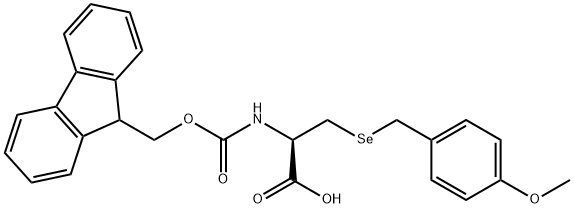General Description
Building block for the introduction of selenocysteine during Fmoc SPPS [1-3]. Selenocysteine derivatives can undergo enantiomerization during coupling and can form dehydroalanine and β-piperidinylalanine containing side products during subsequent chain elongation [3]. Therefore, activation methods, such as HBTU or PyBOP which involve the addition of a tertiary, base should be avoided for addtion of the Sec and all subsequent residues.
Cleavage and side-chain deprotection of Sec-containing peptides can be effected using tFA-m-cresol-thioanisole-EDT-water (80:5:5:5:5)[2] or TFA-water-DCM-TIS (89:5:51) at 4 °C [3]. As the Se-pMeOBzl bond is stable to TFA, these emthods result in formation of the corresponding Sev(pMeOBzl) peptide.
Peptides containing two Sec(pMeOBzl) residues can be oxidized directly to the corresponding selenocystinyl peptides by treatment with 5-10% DMSO in TFA [1-3].

